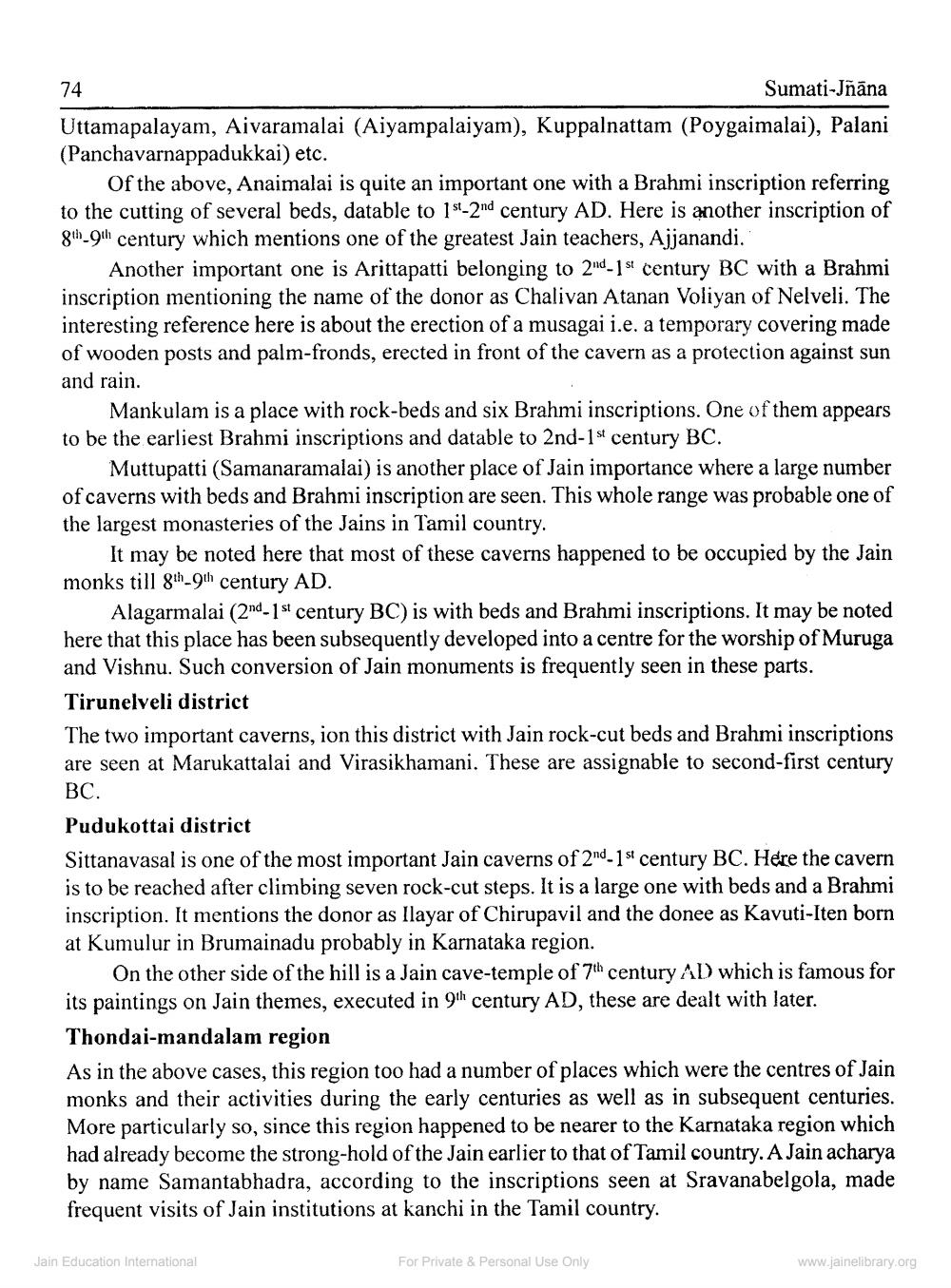________________
74
Sumati-Jñana Uttamapalayam, Aivaramalai (Aiyampalaiyam), Kuppalnattam (Poygaimalai), Palani (Panchavarnappadukkai) etc.
Of the above, Anaimalai is quite an important one with a Brahmi inscription referring to the cutting of several beds, datable to 1st-2nd century AD. Here is another inscription of 8th_91h century which mentions one of the greatest Jain teachers, Ajjanandi.
Another important one is Arittapatti belonging to 2nd- 1st century BC with a Brahmi inscription mentioning the name of the donor as Chalivan Atanan Voliyan of Nelveli. The interesting reference here is about the erection of a musagai i.e. a temporary covering made of wooden posts and palm-fronds, erected in front of the cavern as a protection against sun and rain.
Mankulam is a place with rock-beds and six Brahmi inscriptions. One of them appears to be the earliest Brahmi inscriptions and datable to 2nd-1st century BC.
Muttupatti (Samanaramalai) is another place of Jain importance where a large number of caverns with beds and Brahmi inscription are seen. This whole range was probable one of the largest monasteries of the Jains in Tamil country.
may be noted here that most of these caverns happened to be occupied by the Jain monks till 8th 9th century AD.
Alagarmalai (2nd- 1st century BC) is with beds and Brahmi inscriptions. It may be noted here that this place has been subsequently developed into a centre for the worship of Muruga and Vishnu. Such conversion of Jain monuments is frequently seen in these parts. Tirunelveli district The two important caverns, ion this district with Jain rock-cut beds and Brahmi inscriptions are seen at Marukattalai and Virasikhamani. These are assignable to second-first century BC. Pudukottai district Sittanavasal is one of the most important Jain caverns of 2nd-1" century BC. Here the cavern is to be reached after climbing seven rock-cut steps. It is a large one with beds and a Brahmi inscription. It mentions the donor as llayar of Chirupavil and the donee as Kavuti-Iten born at Kumulur in Brumainadu probably in Karnataka region.
On the other side of the hill is a Jain cave-temple of 7th century AD which is famous for its paintings on Jain themes, executed in 9th century AD, these are dealt with later. Thondai-mandalam region As in the above cases, this region too had a number of places which were the centres of Jain monks and their activities during the early centuries as well as in subsequent centuries. More particularly so, since this region happened to be nearer to the Karnataka region which had already become the strong-hold of the Jain earlier to that of Tamil country. A Jain acharya by name Samantabhadra, according to the inscriptions seen at Sravanabelgola, made frequent visits of Jain institutions at kanchi in the Tamil country.
Jain Education International
For Private & Personal Use Only
www.jainelibrary.org




